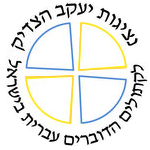Feast of Our Lady of Sorrows - September 15
"Mother of Sorrows" (Latin: Mater Dolorosa) or Our Lady of the Seven Sorrows are among the names by which the Blessed Virgin Mary is referred to in relation to the sorrows in her life. The Seven Sorrows of Mary are a popular devotion in the Roman Catholic Church. There is a devotional prayer which consists of meditation on her Seven Sorrows.
![]()
The Seven Sorrows refer to events in the life of the Blessed Virgin Mary as recounted in the Gospel narratives:
1. The Prophecy of Simeon over the Infant Jesus (Luke 2:34)
2. The Flight into Egypt of the Holy Family (Matthew 2:13)
3. The Loss of the Child Jesus for Three Days (Luke 2:43)
4. The Meeting of Jesus and Mary along the Way of the Cross (Luke 23:26)
5. The Crucifixion, where Mary stands at the foot of the cross (John 19:25)
6. The Descent from the Cross, where Mary receives the dead body of Jesus in her arms (Matthew 27:57)
7. The Burial of Jesus (John 19:40)
The first altar to the Mater Dolorosa was set up in 1221 at the monastery of Schönau. Approval for the celebration of a feast in honor of Our Lady of Sorrows was first granted in 1727. In 1913, Pope Pius X moved the feast to September 15, the day after the Feast of the Cross. It is still observed on that date.
The ‘Stabat Mater Dolorosa’ is a thirteenth century Roman Catholic sequence (poem) attributed to Jacopone da Todi, an Italian Franciscan. Its title is an abbreviation of the first line, Stabat mater dolorosa ("The sorrowful mother stood"). The hymn, one of the most powerful of extant medieval poems, meditates on the suffering of Mary, Jesus Christ's mother, during his crucifixion. It is sung at the liturgy on the memorial of Our Lady of Sorrows.
It has been set to music by many composers, with the most famous settings being those of Alessandro Scarlatti, Antonio Vivaldi, Domenico Scarlatti, Giovanni Battista Pergolesi, Joseph Haydn, Gioachino Rossini, Franz Schubert, Franz Liszt, Giuseppe Verdi among others.
The photograph is of the altar of the Sorrowful Mother on Golgotha, in the Church of the Holy Sepulcher.
The Latin text:
Stabat Mater dolorosa iuxta crucem lacrimosa dum pendebat Filius
Cuius animam gementem contristatem et dolentem pertransivit gladius
O quam tristis et afflicta fuit illa benedicta Mater Unigeniti
Quae moerebat et dolebat et tremebat cum videbat nati poenas incliti
Quis est homo qui non fleret Matri Christi si videret in tanto supplicio?
Quis non posset contristari Matrem Christi contemplari dolentum cum filio?
Pro peccatis suae gentis vidit Iesum in tormentis et flagellis subditum
Vidit suum dulcem natum moriendo desolatum dum emisit spiritum
Eia Mater, fons amoris, me sentire vim doloris fac ut tecum lugeam
Fac ut ardeat cor meum in amando Christum Deum ut sibi complaceam
Sancta Mater, istud agas crucifixi fige plagas cordi meo valide
Tui nati vulnerati tam dignati pro me pati poenas mecum divide
Fac me vere tecum flere crucifixo condolere donec ego vixero
Iuxta crucem tecum stare te libenter sociare in planctu desidero
Virgo virginum praeclara mihi iam non sis amara fac me tecum plangere
Fac ut portem Christi mortem passionis eius sortem et plagas recolere
Fac me plagis vulnerari cruce hac inebriari ob amorem filii
Inflammatus et accensus, per te, Virgo, sim defensus in die iudicii
Fac me cruce custodiri morte Christi praemuniri confoveri gratia
Quando corpus morietur fac ut animae donetur paradisi gloria. Amen
The English translation:
At the Cross her station keeping, stood the mournful Mother weeping, close to her son to the last.
Through her heart, His sorrow sharing, all His bitter anguish bearing, now at length the sword has passed.
O how sad and sore distressed was that Mother, highly blest, of the sole-begotten One.
Christ above in torment hangs, she beneath beholds the pangs of her dying glorious Son.
Is there one who would not weep, whelmed in miseries so deep,
Christ's dear Mother to behold,
Can the human heart refrain from partaking in her pain, in that Mother's pain untold?
For the sins of His own nation,
She saw Jesus wracked with torment,
All with scourges rent:
She beheld her tender Child,
Saw Him hang in desolation,
Till His spirit forth He sent.
O thou Mother! Fount of love!
Touch my spirit from above; make my heart with thine accord:
Make me feel as thou hast felt; make my soul to glow and melt with the love of Christ my Lord.
Holy Mother! Pierce me through, in my heart each wound renew of my Savior crucified:
Let me share with thee His pain, who for all my sins was slain, who for me in torments died.
Let me mingle tears with thee, mourning Him who mourned for me, all the days that I may live;
By the Cross with thee to stay, there with thee to weep and pray, is all I ask of thee to give.
Virgin of all virgins blest!
Listen to my fond request: let me share thy grief divine.
Let me, to my latest breath, in my body bear the death of that dying Son of thine.
Wounded with His every wound, steep my soul till it hath swooned, in His very Blood away;
Be to me, O Virgin, nigh, lest in flames I burn and die, in His awful Judgment Day.
Christ, when Thou shalt call me hence, by Thy Mother my defense, by Thy Cross my victory;
When my body dies, let my soul be granted the glory of Paradise. Amen.
Here are a few musical versions of the "Stabat Mater Dolorosa" composed by famous composers in outstanding performances:
1. The composer Antonio Vivaldi (1678-1741), performed by the Countertenor Philippe Jaroussky.
2. The composer Giovanni Battista Pergolesi (1710-1736), performed by the Soprano Elisabeth Scholl and the Countertenor Andreas Scholl.
3. The composer Gioachino Rossini (1792-1868), performed by the London Symphony Orchestra and Chorus under Istvan Kertesz.
4. The composer Joseph Haydn (1732-1809), performed by the Warsaw Boys and Men's Choir.











 Year B, Fourth Sunday of Easter
Year B, Fourth Sunday of Easter Year B, Palm Sunday
Year B, Palm Sunday Feast of Saint Joseph - March 19
Feast of Saint Joseph - March 19 Year B, Fifth Sunday of Lent
Year B, Fifth Sunday of Lent